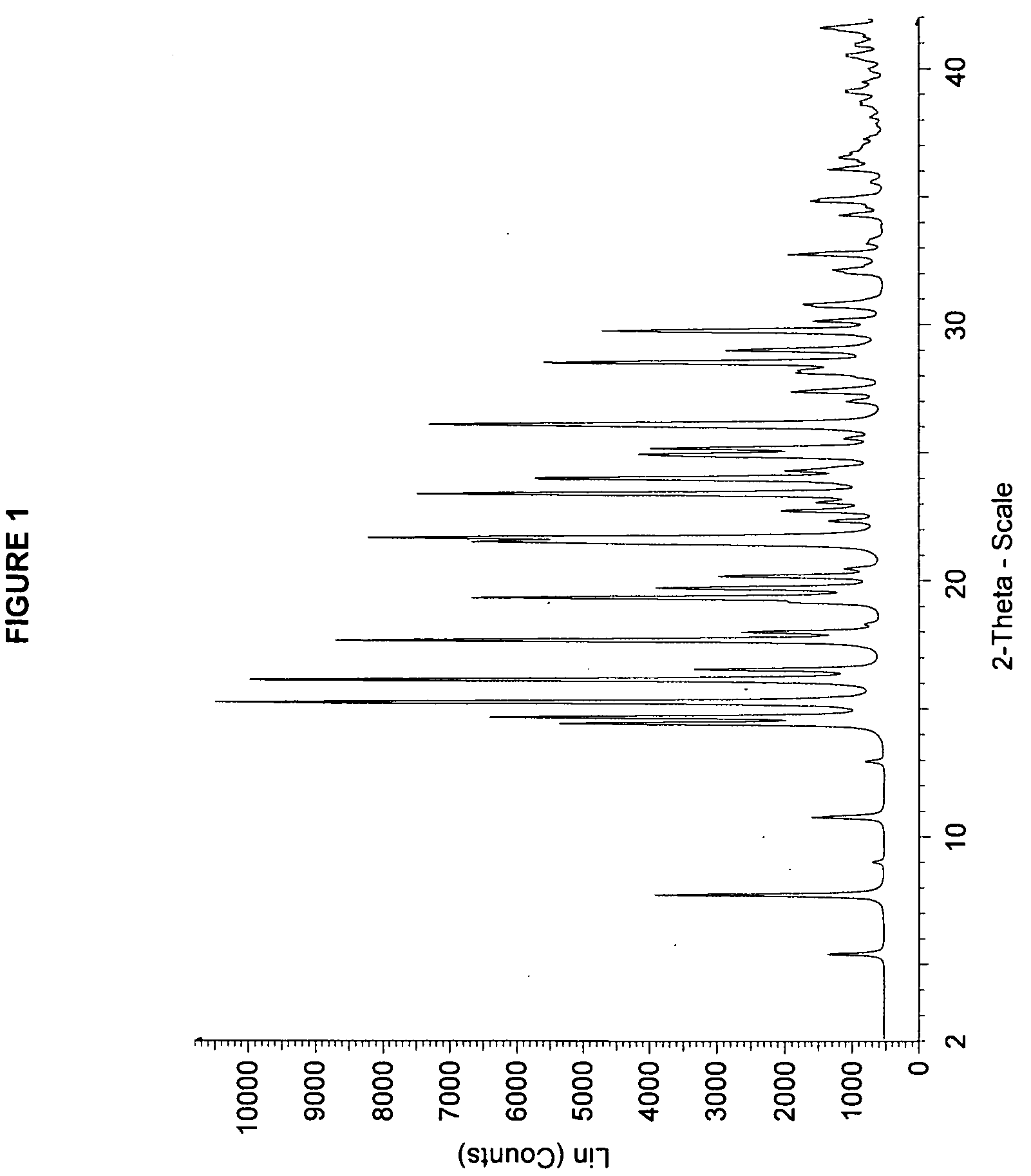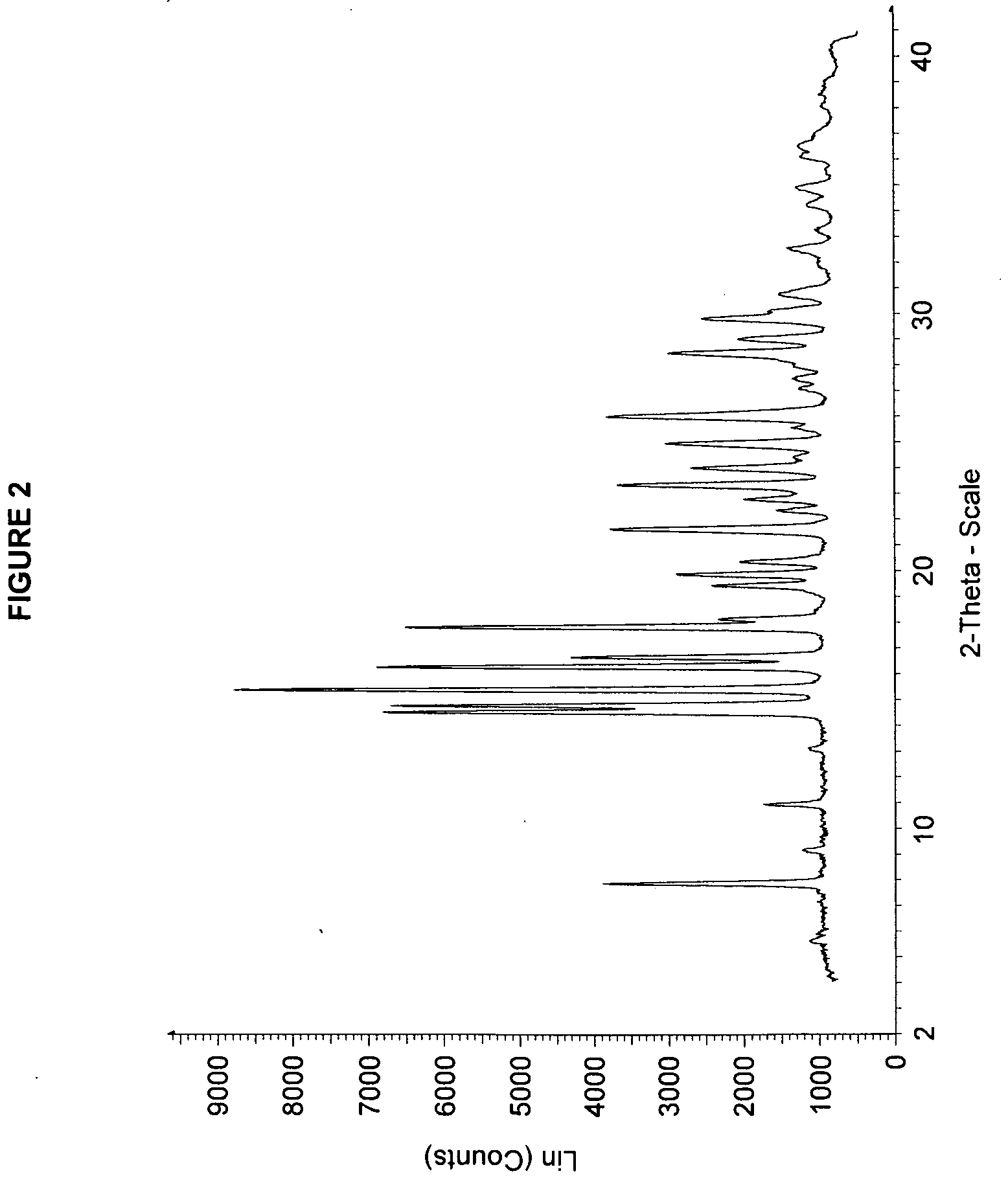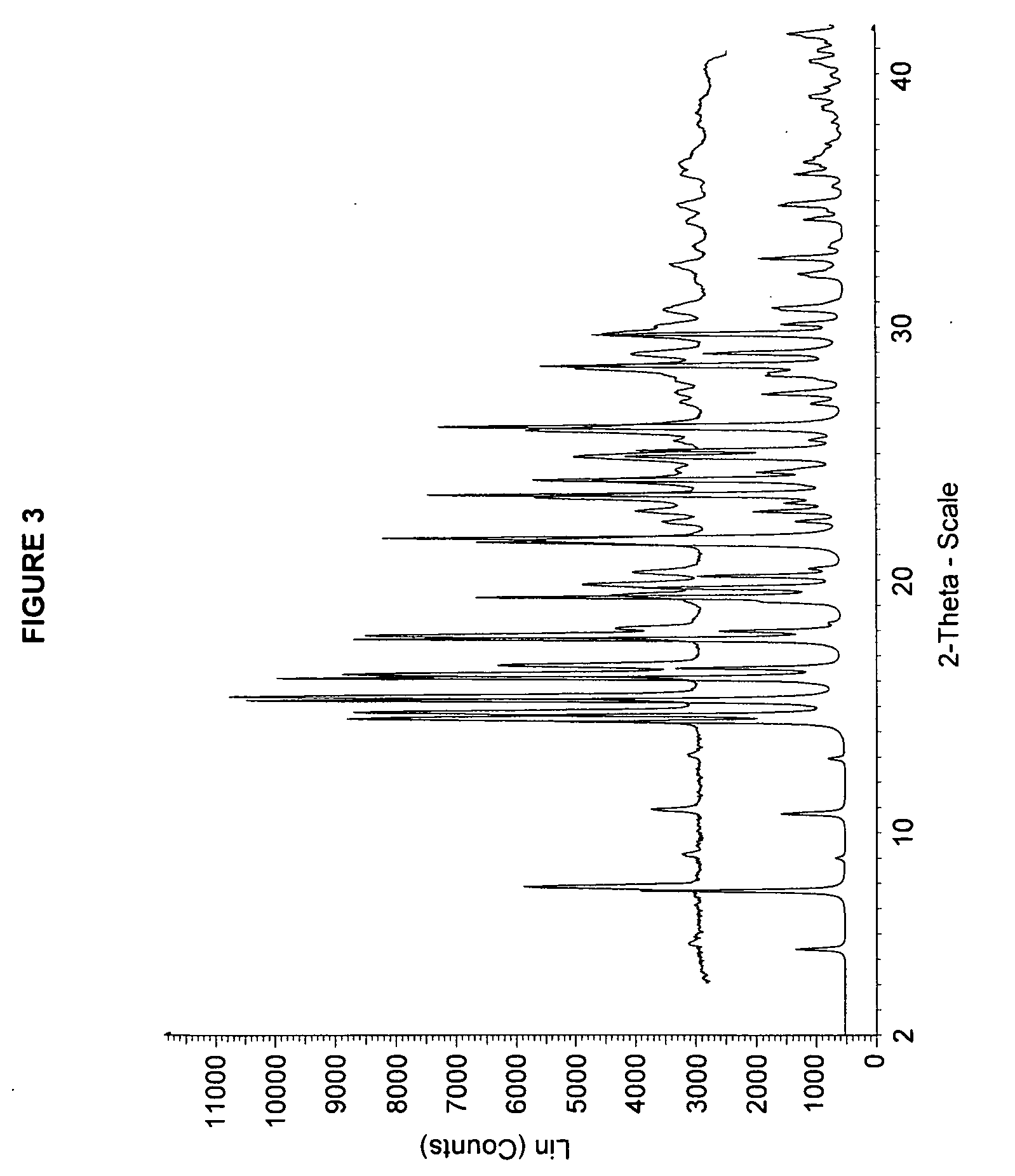Processes for producing cycloalkylcarboxamido-pyridine benzoic acids
a technology of cycloalkylcarboxamidopyridine and benzoic acid, which is applied in the direction of drug composition, organic chemistry, sexual disorder, etc., can solve the problems of reducing the anion transport, affecting the ion and fluid transport, and affecting the cf associated gene. , to achieve the effect of treating or lessening the severity
- Summary
- Abstract
- Description
- Claims
- Application Information
AI Technical Summary
Benefits of technology
Problems solved by technology
Method used
Image
Examples
examples
Methods & Materials
[0339]Differential Scanning Calorimetry (DSC)
[0340]The Differential scanning calorimetry (DSC) data of Compound 1 were collected using a DSC Q100 V9.6 Build 290 (TA Instruments, New Castle, Del.). Temperature was calibrated with indium and heat capacity was calibrated with sapphire. Samples of 3-6 mg were weighed into aluminum pans that were crimped using lids with 1 pin hole. The samples were scanned from 25° C. to 350° C. at a heating rate of 1.0° C. / min and with a nitrogen gas purge of 50 ml / min. Data were collected by Thermal Advantage Q Series™ version 2.2.0.248 software and analyzed by Universal Analysis software version 4.1D (TA Instruments, New Castle, Del.). The reported numbers represent single analyses.
[0341]XRPD (X-Ray Powder Diffraction)
[0342]The X-Ray diffraction (XRD) data of Form 1 were collected on a Bruker D8 DISCOVER powder diffractometer with HI-STAR 2-dimensional detector and a flat graphite monochromator. Cu sealed tube with Kα radiation was ...
PUM
| Property | Measurement | Unit |
|---|---|---|
| Temperature | aaaaa | aaaaa |
| Temperature | aaaaa | aaaaa |
| Temperature | aaaaa | aaaaa |
Abstract
Description
Claims
Application Information
 Login to View More
Login to View More - R&D
- Intellectual Property
- Life Sciences
- Materials
- Tech Scout
- Unparalleled Data Quality
- Higher Quality Content
- 60% Fewer Hallucinations
Browse by: Latest US Patents, China's latest patents, Technical Efficacy Thesaurus, Application Domain, Technology Topic, Popular Technical Reports.
© 2025 PatSnap. All rights reserved.Legal|Privacy policy|Modern Slavery Act Transparency Statement|Sitemap|About US| Contact US: help@patsnap.com



